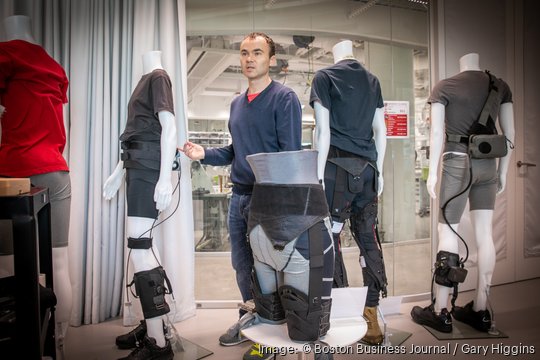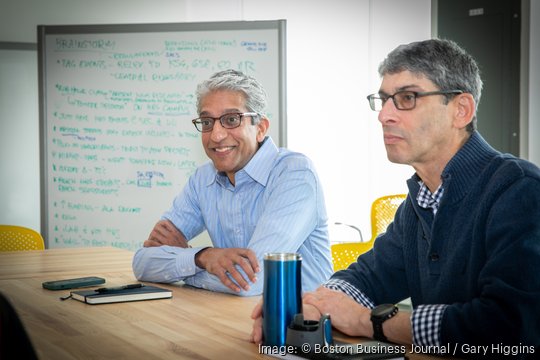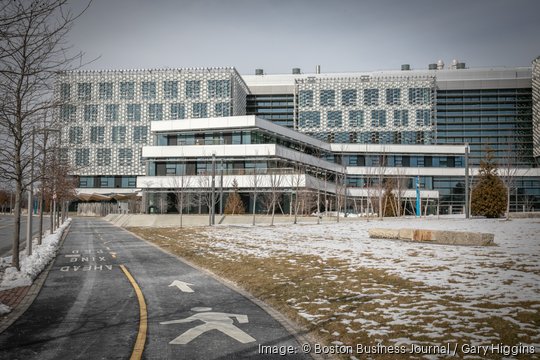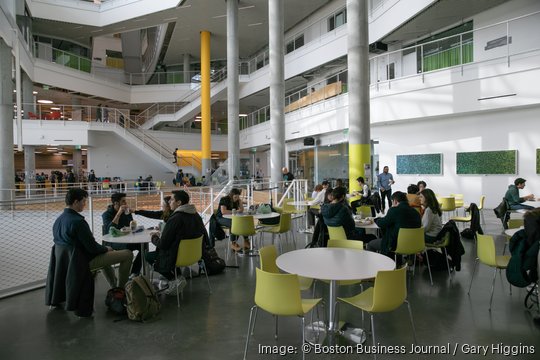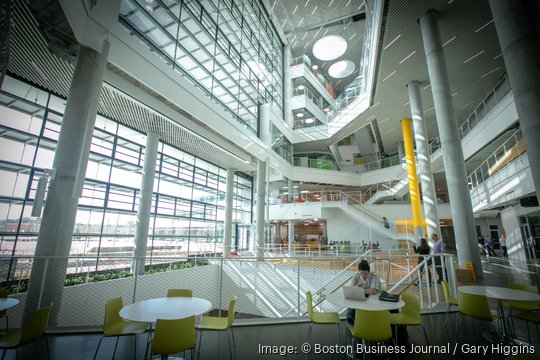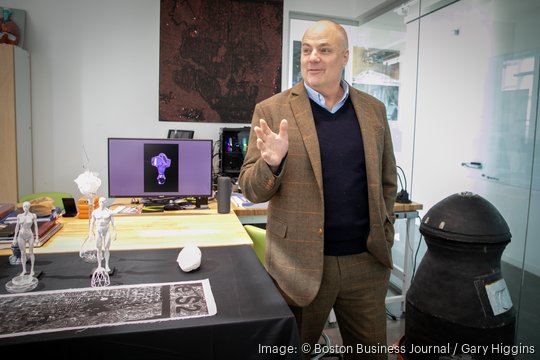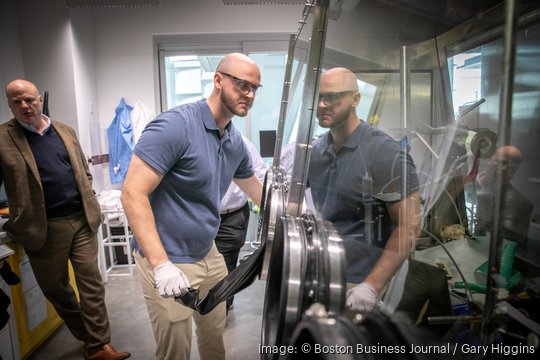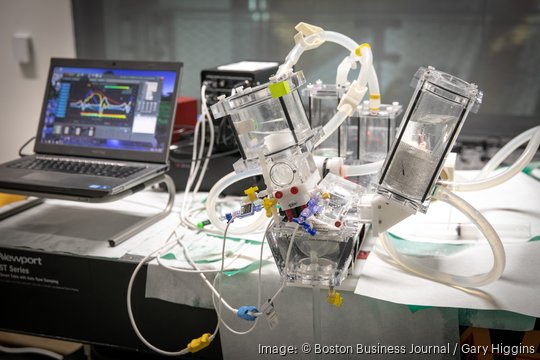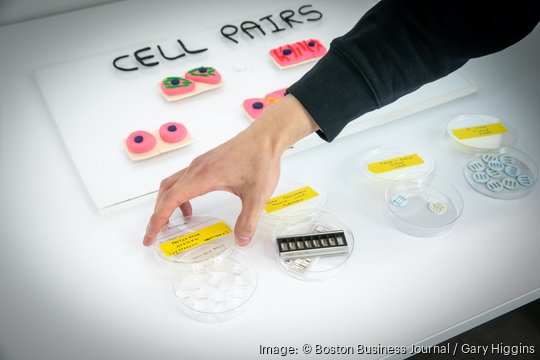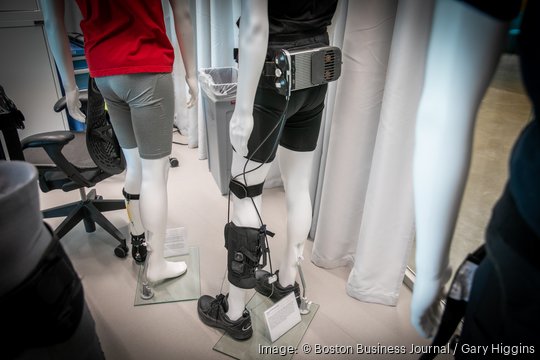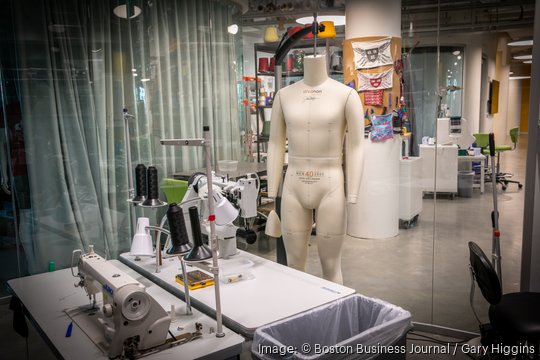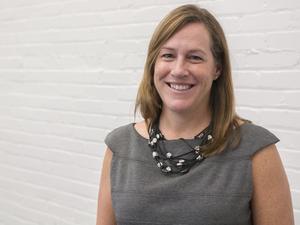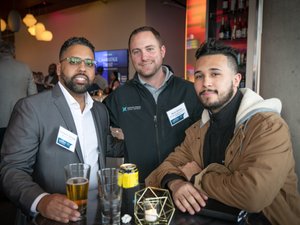Technologies to decode the language of genomes, package food in biodegradable skins and help individuals recovering from stroke relearn to walk are being developed within the walls of Harvard University. And now, a new accelerator is trying to get this research out of these university labs and developed into commercially viable products and services.
Last year, the university announced the launch of the Harvard Grid and committed to advancing innovative research in “tough tech” areas toward startup formation. The program gives emerging entrepreneurs funding, physical space, educational programming and connections to alumni, investors and the broader startup ecosystem.
To kick off 2023, the Grid announced funding to five Harvard faculty-led research projects in areas including medicine, climate and manufacturing.
BostInno recently took a trip to Harvard's new Science and Engineering Complex in Allston to meet some of the people behind the Grid, including inaugural executive director Paul Hayre, and the teams benefiting from this new program.
Building a 'rising tide'
When Harvard launched the Grid last year, Hayre said the university got a lot of questions about what this accelerator signifies.
“Is this an idea of Harvard playing catch up? Or is this Harvard sort of doubling down on what might be strengths already?” Hayre said. "Candidly, let’s call it maybe a little bit of both."
Harvard was already doing translational research, Hayre said. Harvard's Office of Technology Development (OTD) ran a physical sciences and engineering accelerator for about a decade and helped launch startups like Verve Motion and Soft Robotics. This program for physical sciences and engineering companies has morphed into the Grid, which is a collaboration with the Harvard John A. Paulson School of Engineering and Applied Sciences (SEAS).
Alan Gordon, director of business development for OTD, said the Grid has additional collaborations with SEAS, as well as Hayre’s leadership and more funding to set it apart from its predecessor.
“We do translation and we would like to do more of it. There’s a belief there’s an opportunity to do more. So we are digging deep in the well… the well’s a lot deeper than we’ve been able to dig so far,” Hayre said.
Gordon said the Grid is additive to the programs that already exist at Harvard. It’s not trying to replace initiatives like Harvard Innovation Labs, he said.
“It’s complimentary to the i-lab. It doesn’t overlap. It doesn’t compete,” Gordon said. “There are other innovation initiatives around the university and they are complementary to each other. It’s the proverbial rising tide lifts all boats.”
Walking a new path
At first glance, Professor Conor Walsh’s lab at Harvard’s Science and Engineering Complex looks an awful lot like a shopfront. Full-body mannequins stand dressed in t-shirts and shorts. But atop these outfits sit different evolutions of Walsh’s work.
“Our group focuses a lot on wearable technology, medical technology in particular,” Walsh said. “Our goal is generally to try and assist with human movement or quantify human movements.”
He said their research is at the intersection of apparel design, robotics and movement science. Visitors to the space will see a sewing machine situated inside this science lab.
An example of their work includes an inflatable structure that assists the wearer with lifting their arms. This could help those with a physical disability, or those who work in environments where they need to work with their arms raised above their heads for long periods of time.
For their recently funded Grid project, Walsh said they’re venturing beyond mechanical assistance into electrical assistance.
“We’re actually looking to electrically stimulate the person’s own muscles and be able to kind of help restore function for them,” Walsh said.
Sign up for The Beat, BostInno’s free daily innovation newsletter from BostInno reporter Hannah Green. See past examples here.
The group is looking to develop this technology for stroke patients relearning to walk. Walsh said such patients can lose the connection between the brain and the muscles in a limb, so the team aims to use sensors to monitor their walking, notice how the muscles should be operating and stimulate them to function as they did prior to the stroke. The goal is to demonstrate a prototype of their technology in the community in the next year.
“The Grid is kind of filling this gap between, 'OK, we have some promising research' and 'now we’d like another year to refine it, optimize it and be able to generate a proof of concept to show the value',” Walsh said.
A multipurpose cotton candy machine
Professor Kit Parker’s space in the same building, upstairs from Walsh’s lab, is also a bit of an art hub. A few years ago, Parker said he got frustrated with the lack of creativity in science and engineering training. He started bringing artists in and encouraging his science students to create artwork. There is a tempting box full of Play-Doh containers in the lab.
Beyond art, Parker’s team is also experimenting with something that resembles a cotton candy machine. But instead of spinning webs with sugar, their machine uses a variety of polymers. (Watch a video of how the machine spins out materials here.)
“Imagine taking a cotton candy machine, putting it upside down on a toilet bowl, and spinning out these fibers,” Parker said.
By using different materials, Parker and his team quickly realized this technology could have many different applications.
“When we first started doing these nanofibers, the idea was to make wound dressings for people. And then we realized there were lots of different things we could do,” Parker said. “So we went from wound dressing to making heart valves.”
This technology has also been used to launch plant-based food startup Tender Food. At Harvard, the team began spinning “muscle fibers” from vegetable plant proteins. Last year, the Somerville startup announced a $12 million seed round led by Chris Sacca’s Lowercarbon Capital.
Some of the fibers the team uses are designed to break down, such as the wound dressings.
“Somewhere along the way, we turned into accidental sustainable-ists,” Parker said. “And so we started thinking about packaging.”
At the lab, Parker and his team demonstrated how an avocado coated in their nanofibers, which looks like a thin layer of green paint covering the food, washes off in seconds in the sink. The goal is to use this as a biodegradable form of packaging.
Teams such as those in Parker’s and Walsh’s labs have already shown success turning projects into companies. Harvard’s hope is that through the Grid, the university will become more prolific in its translational work.
